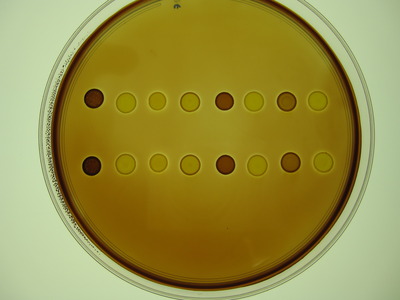Bacteria invest in evolutionary success
Researchers at Sydney and Exeter Universities have, for the first time, recreated and analysed the complex interplay between bacterial investment strategies and their outcomes.
Co-author Dr Tom Ferenci from the University of Sydney’s School of Molecular Bioscience explained that there have been theories since the 1960s relating to “how decision-making by organisms is related to their survival on one hand or to rapid growth on the other” - both are not possible simultaneously because resources are limited. Yet bacteria are “hugely successful and have managed to colonise every part of the planet”, said Dr Ferenci.
The researchers used “synthetic biology to create identical bacteria but with fixed investment strategies, some investing in growth, some in stress resistance and others in both to various degrees”, said Dr Ferenci. He said this system “precisely defines a relationship between traded objects in a living ‘market’ and permits the testing of strategies in many different environments”.

The research showed that like humans investing in cash, bacteria trade in costly proteins to reduce their stress levels or to increase consumption and grow faster. A mathematical model predicted the best way for the bacteria to invest their resources in a trade-off between growth and stress resistance, with different trajectories of gene frequency changes as a function of condition-specific trade-offs. Evolution is the decision-making process, with different choices encoded in the genes.
University of Exeter co-author Dr Ivana Gudelj said the research showed “very similar investment opportunities can require different investment strategies. These strategies are constrained by the subtleties in trade-offs that are usually invisible or ignored in real markets. The study is a classic demonstration of Darwinian economics and survival of the fittest.”
The research was funded by the Natural Environment Research Council, the Biotechnology and Biosciences Research Council, the Engineering and Physical Sciences Research Council and the Australian Research Council. It was published in the journal Ecology Letters.
Blood test could be used to diagnose Parkinson's earlier
Researchers have developed a new method that requires only a blood draw, offering a non-invasive...
Cord blood test could predict a baby's risk of type 2 diabetes
By analysing the DNA in cord blood from babies born to mothers with gestational diabetes,...
DNA analysis device built with a basic 3D printer
The Do-It-Yourself Nucleic Acid Fluorometer, or DIYNAFLUOR, is a portable device that measures...



